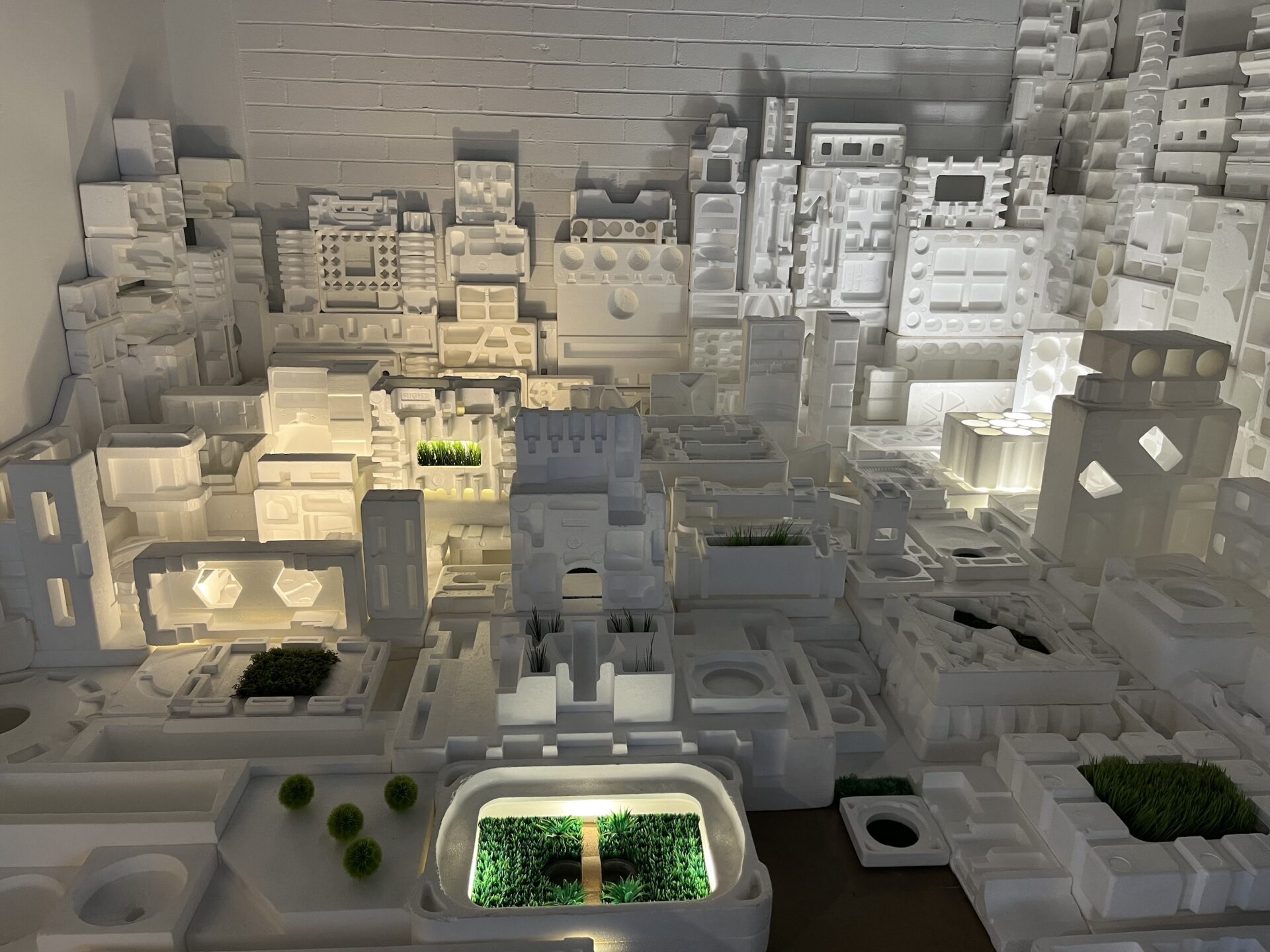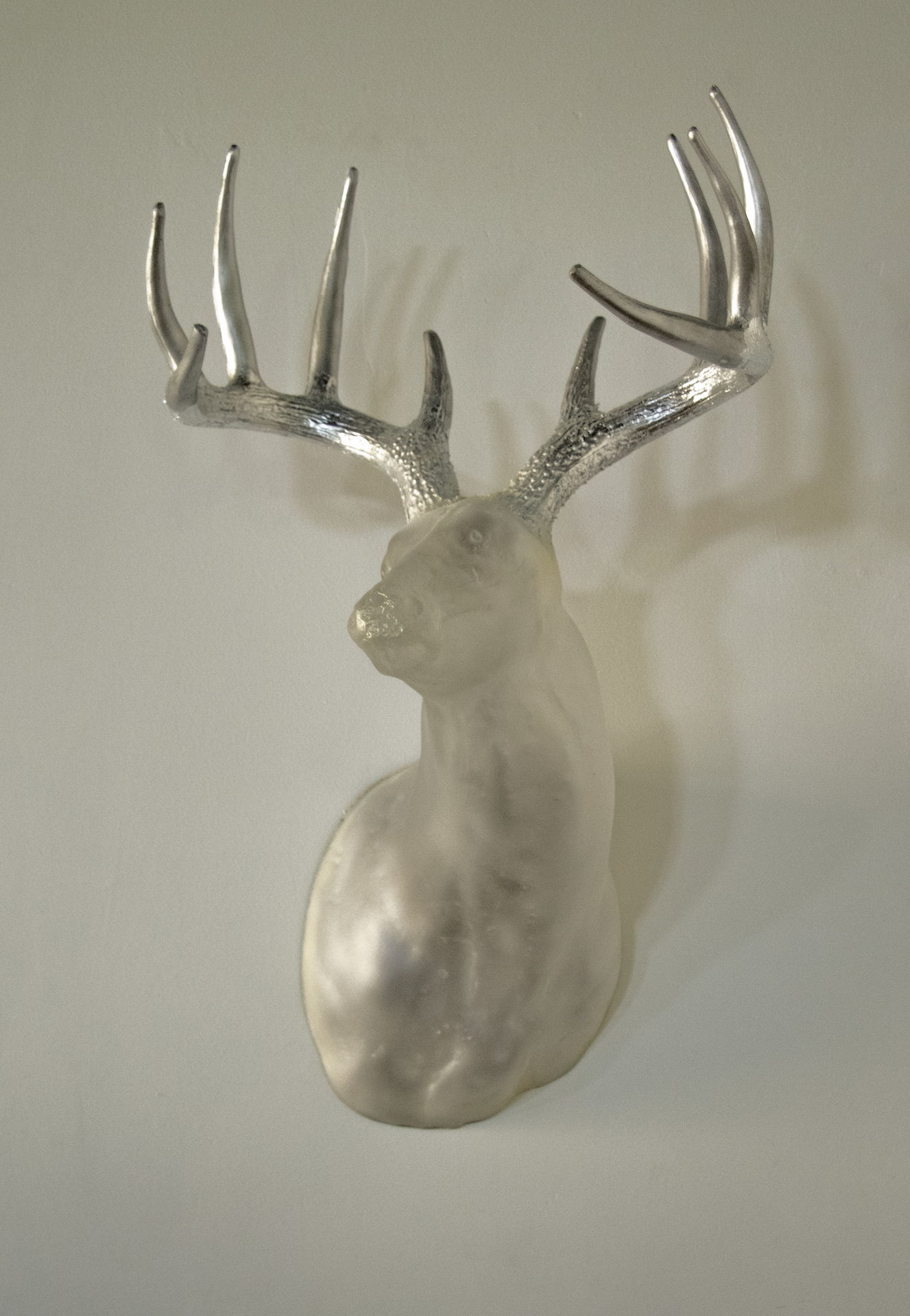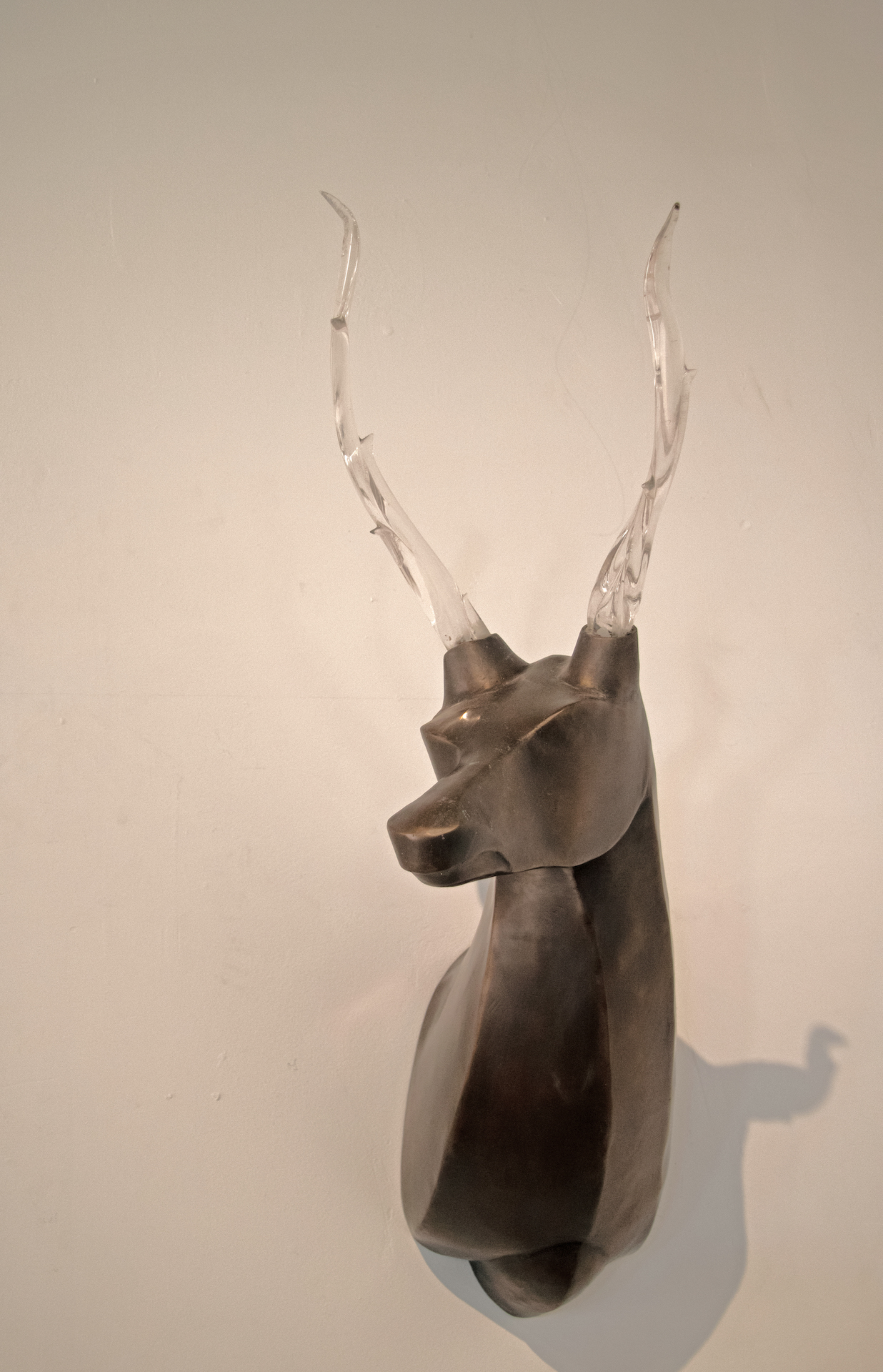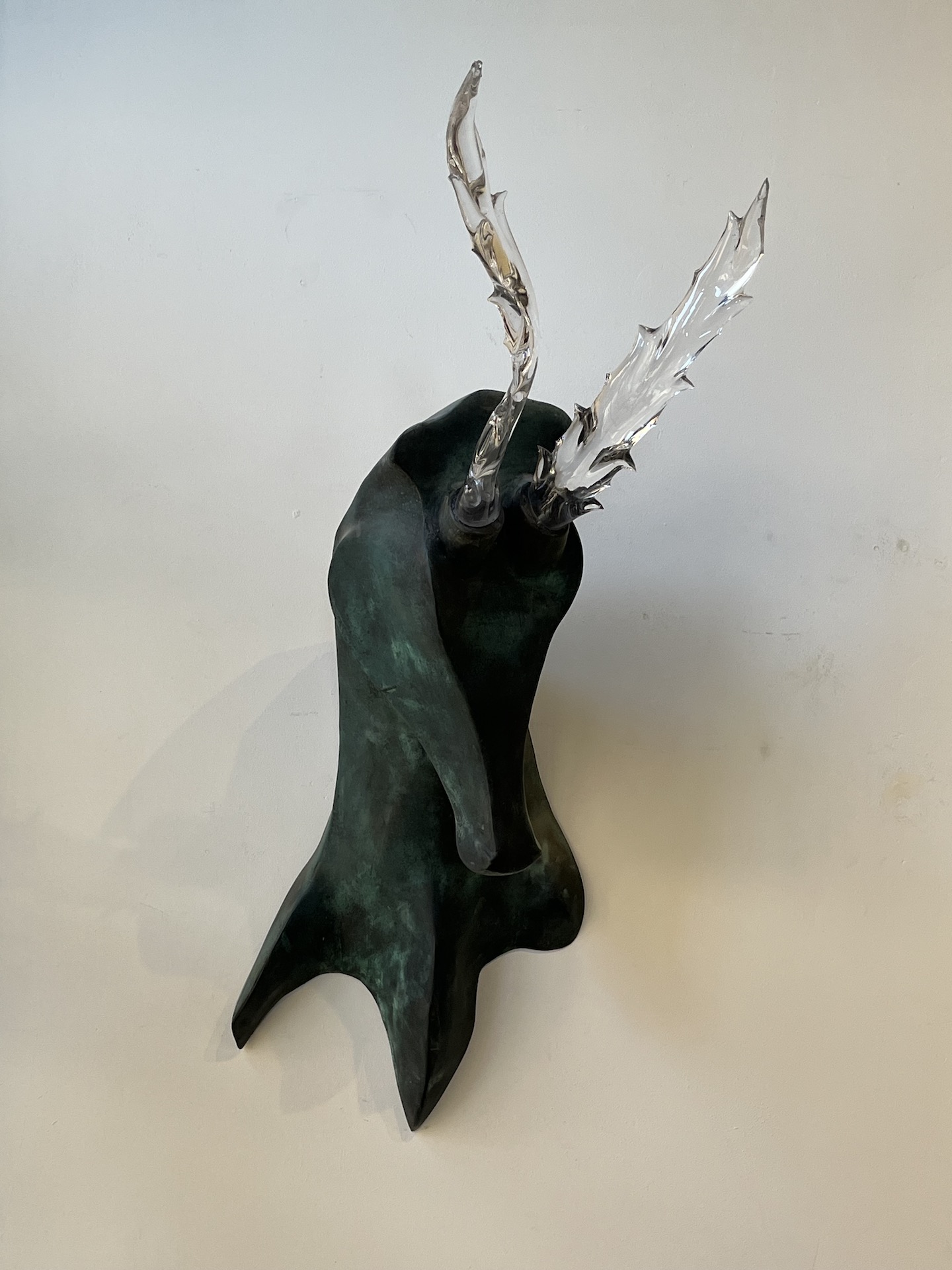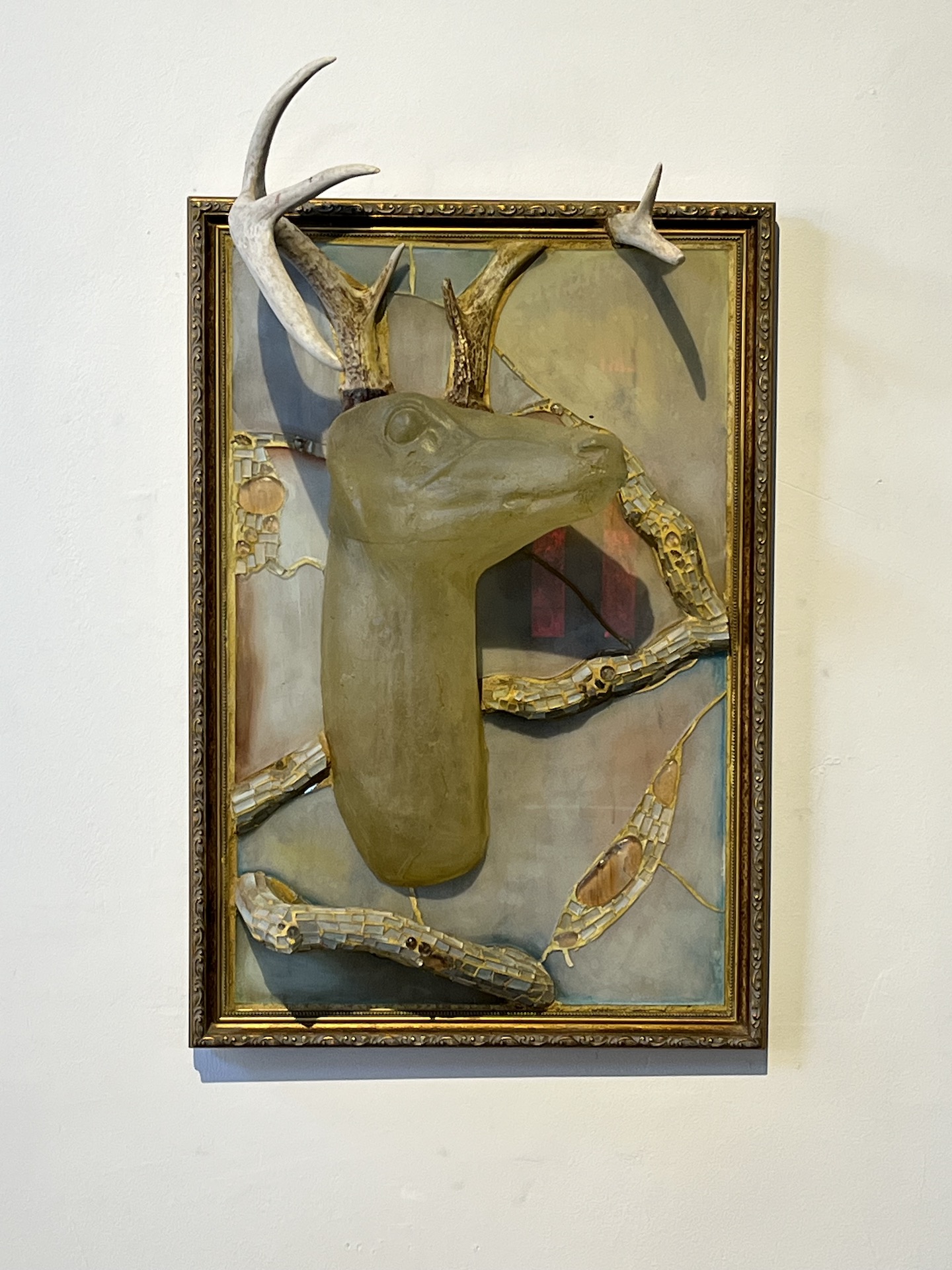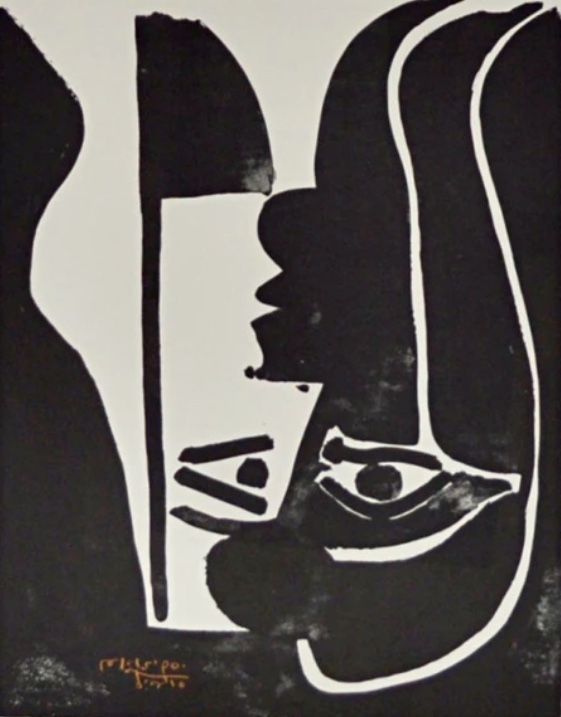Environmental Transcendentalism II
Two artists working in wildly different materials, merging nature, mind, and time to open new spiritual portals for our tired eyes.
Cornelia Jensen creates Microstructures VI, a nighttime cityscape of the future, built of discarded styrofoam, which becomes an imaginary world of possibilities. On Earth, she is a gifted plein air painter who shares the boldness and intimacy of landscape and place. Her abstract paintings let go of inclination to likeness and fly into feeling.
Katja Fritzsche’s sculpture portraits of deer and ram are constructed of glass and bronze: gentle creatures, hard materials. Their strength and grace are frozen in the moment we are allowed to look. We see not only the animals’ power and fragility, but our own.
Cornelia Jensen
“Microstructures” is a panoramic utopian urban environment by artist, Cornelia Jensen. It occurs as a site-specific installation using found Styrofoam packing material, faux grass and light to create a small scale cityscape, including infrastructure and green space. A background in filmmaking and found-object assemblage evolved into the creation of light-imbued sculpture. Instead of demanding external light sources to be visible, it requires darkness to fully appreciate its glowing presence. The use of light brings out a delicate ethereal beauty in material that would otherwise be thrown away after its temporary purpose of cradling delicate consumer products in transit. Instead of becoming an albatross of bulky, non-biodegradable waste, the material is transformed into something that transports us to an imaginary world of possibilities.
After years of being a figurative and figure-ground painter, Jensen transitioned into plein-air landscape painting, like her father had done when she was young. While living in New York City, she worked in a studio from photos she took during her travels in the West. The human-created “order” of the urban landscape fostered a craving for the wild “order” that natural landscapes provide. In the face of the conscious design of a city environment, the process of portraying wilderness became very freeing. Now, abstract painting takes the experiment further by letting go of the control of capturing “likeness”. The landscape and abstract paintings each have a life of their own, unifying nature, mind and time to create a finished moment as art.
Environments, whether man-made or natural, provide a matrix for existence. Jensen’s themes in painting and assemblage experiment with environment and scale, as well as the relationship between human beings and nature. How does environment reflect and/or complement our human lives? To what extent are our environments the negative space to our presence? Her personal concern is how Nature fits with current life, what it offers, what it requires, how it suffers or wins?
Katja Fritzsche
The opposing tension and breadth of many human characteristics are shared by animals strength/fragility, stability/flight, grace/boldness, aggression/submission. I am inspired by their life expression of grace, strength, beauty and raw sensuality. By exploring the architecture of animal’s he and their bodies with glass, steel and other materials, I bring them into our lives and our shared emotional states. The sculptures are extensions of ourselves.
As a child I experienced the tension of opposing worlds — the rough rawness of the South Chicago st mills, the stark beauty of Chicago’s architecture, and the sensuality of animals portrayed in the halls taxidermy in Chicago’s Museum of Natural History. I see myself strongly attracted both by man’s industrial mastering of materials and by the untouched nature of the Southwest, my present home.
